Jeremy DeLisle, Johnny Gonzalez, Brayan Vazquez, Logan Cole, Dr. Amy Moll, Paul Robertson, Dr. Noah Salzman, Dr. Vicki Stieha
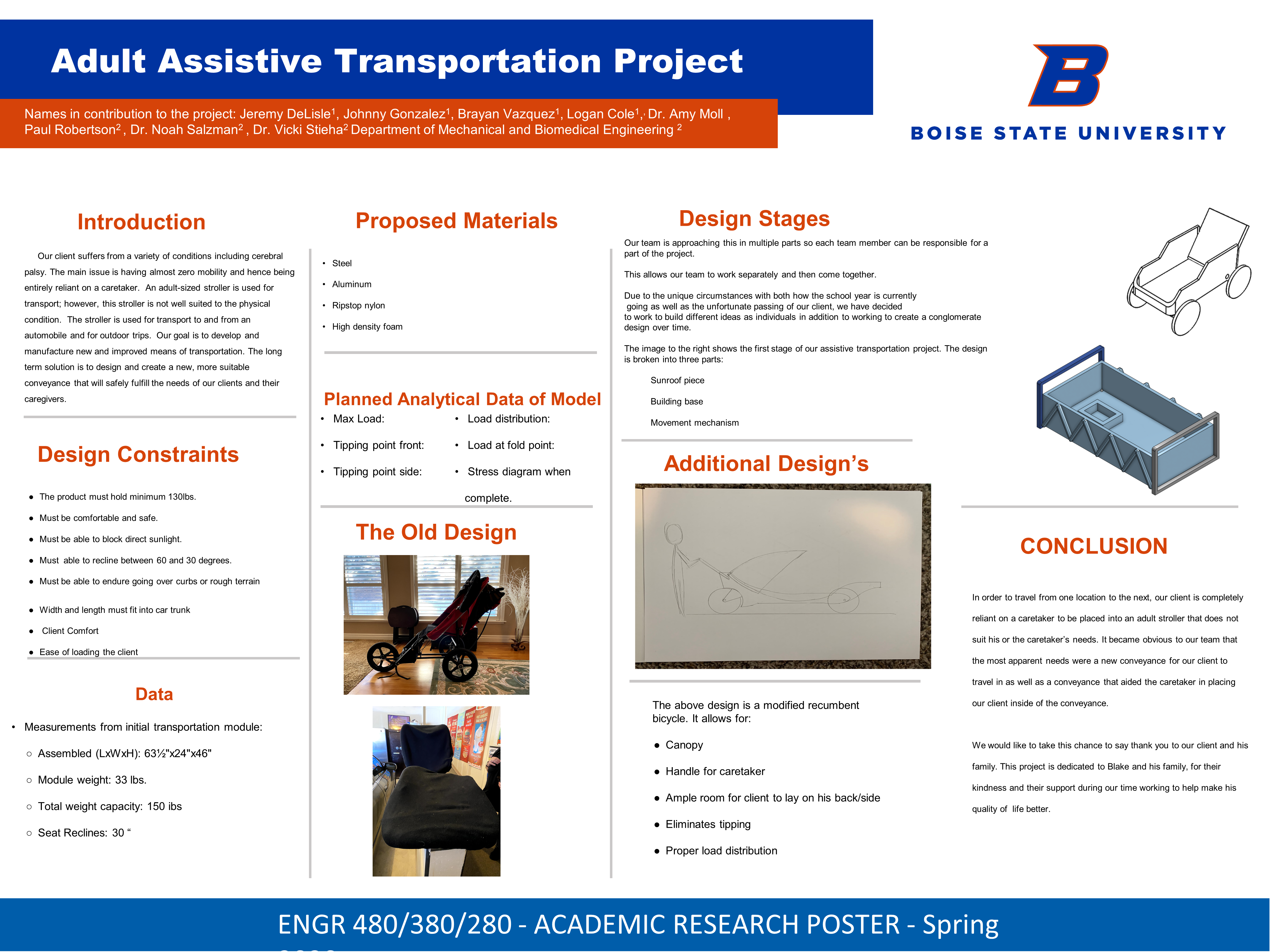
Introduction
Our client suffers from a variety of conditions including cerebral palsy. The main issue is having almost zero mobility and hence being entirely reliant on a caretaker. An adult-sized stroller is used for transport; however, this stroller is not well suited to the physical condition. The stroller is used for transport to and from an automobile and for outdoor trips. Our goal is to develop and manufacture new and improved means of transportation. The long term solution is to design and create a new, more suitable conveyance that will safely fulfill the needs of our clients and their caregivers.
Design Constraints
- The product must hold minimum 130lbs.
- Must be comfortable and safe.
- Must be able to block direct sunlight.
- Must able to recline between 60 and 30 degrees.
- Must be able to endure going over curbs or rough terrain
- Width and length must fit into car trunk
- Client Comfort
- Ease of loading the client
Data
Measurements from initial transportation module:
- Assembled (LxWxH): 63½”x24″x46″
- Module weight: 33 lbs.
- Total weight capacity: 150 ibs
- Seat Reclines: 30″
Proposed Materials
- Steel
- Aluminum
- Ripstop nylon
- High density foam
Planned Analytical Data Model
- Max Load:
- Tipping point front:
- Tipping point side:
- Load distribution:
- Load at fold point:
- Stress diagram when complete.
The Old Design
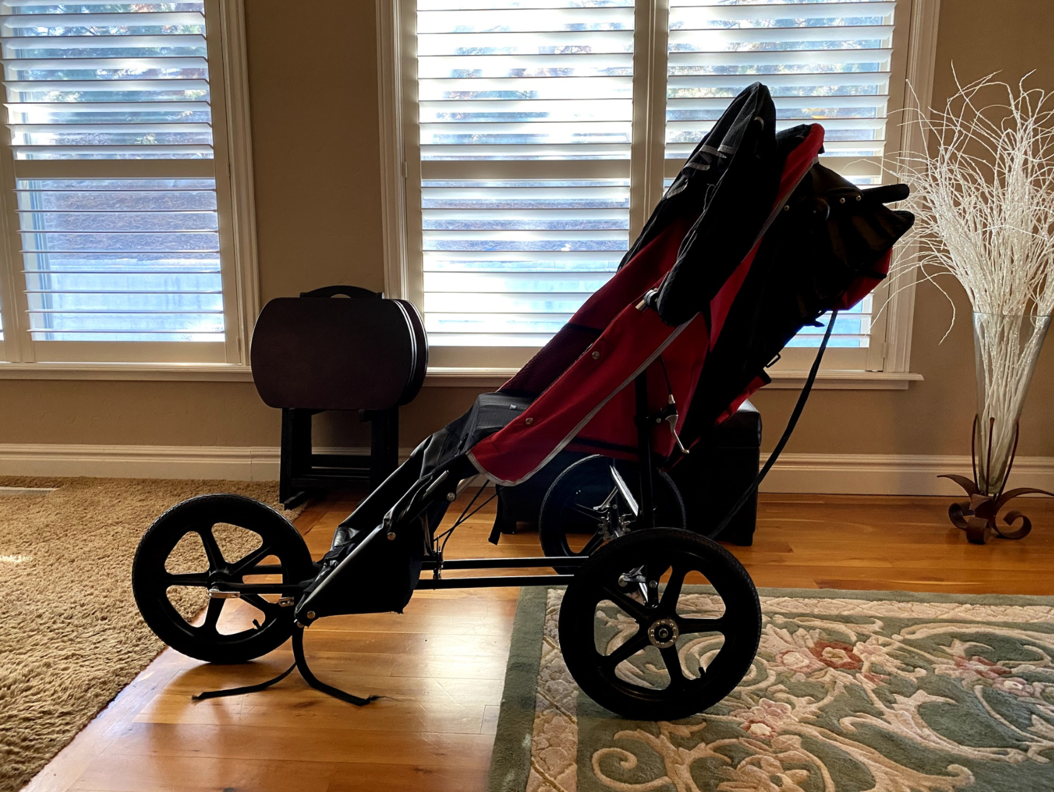
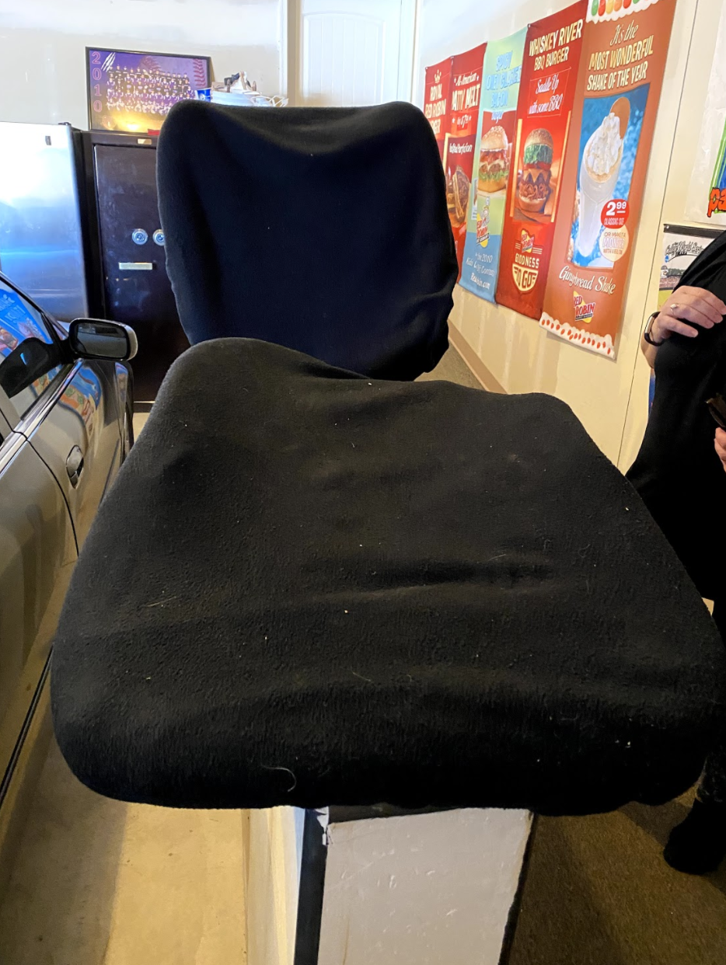
Design Stages
Our team is approaching this in multiple parts so each team member can be responsible for a part of the project.
This allows our team to work separately and then come together.
Due to the unique circumstances with both how the school year is currently
going as well as the unfortunate passing of our client, we have decided
to work to build different ideas as individuals in addition to working to create a conglomerate design over time.
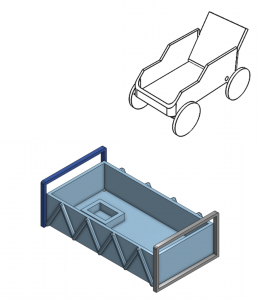
The image to the right shows the first stage of our assistive transportation project. The design is broken into three parts:
- Sunroof piece
- Building base
- Movement mechanism
Additional Designs
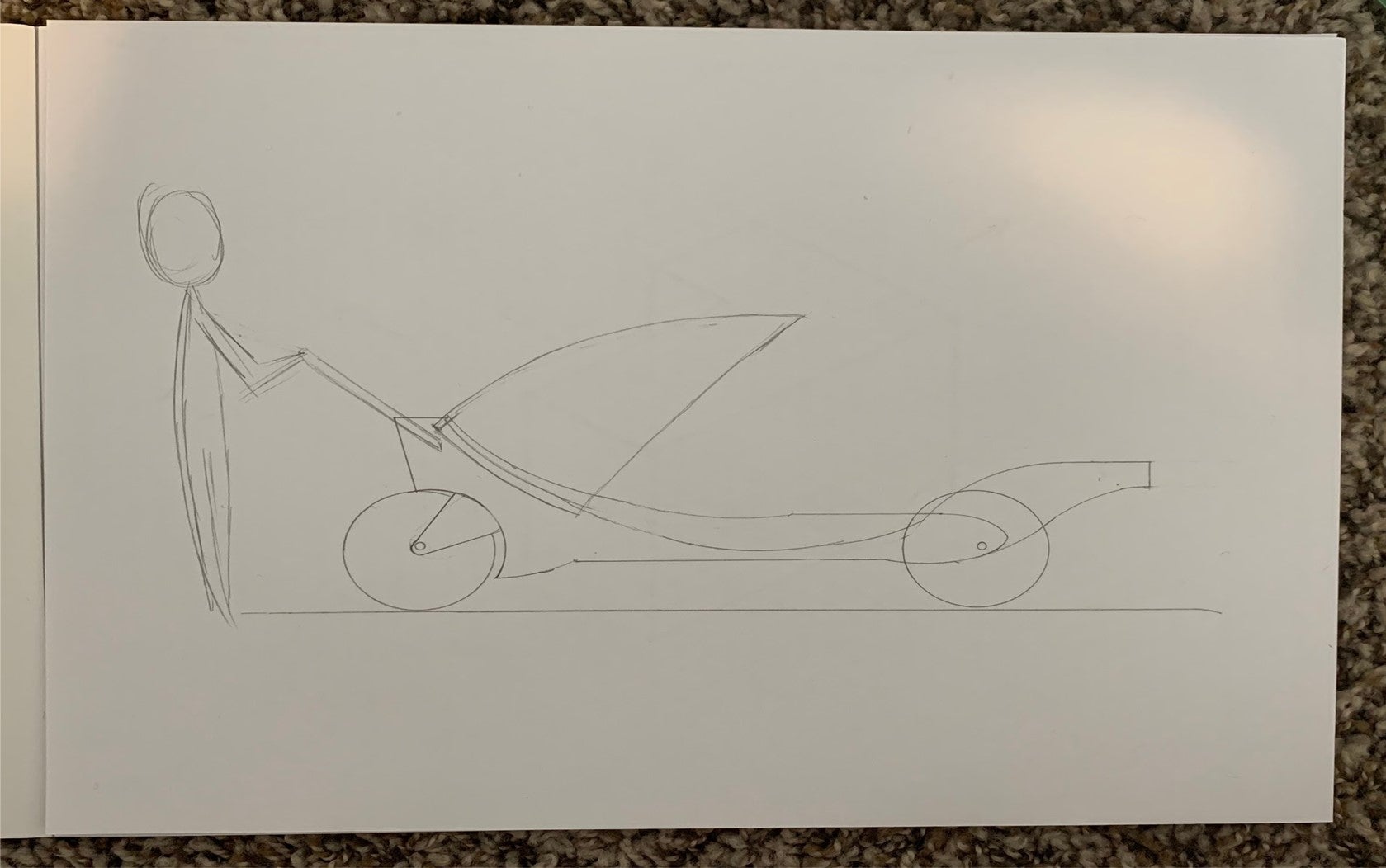
The above design is a modified recumbent bicycle. It allows for:
- Canopy
- Handle for caretaker
- Ample room for client to lay on his back/side
- Eliminates tipping
- Proper load distribution
Conclusions
In order to travel from one location to the next, our client is completely reliant on a caretaker to be placed into an adult stroller that does not suit his or the caretaker’s needs. It became obvious to our team that the most apparent needs were a new conveyance for our client to travel in as well as a conveyance that aided the caretaker in placing our client inside of the conveyance.
We would like to take this chance to say thank you to our client and his family. This project is dedicated to Blake and his family, for their kindness and their support during our time working to help make his quality of life better.
Additional Information
For questions and comments about this research, contact Jeremy DeLisle at jeremydelisle@u.boisestate.edu.